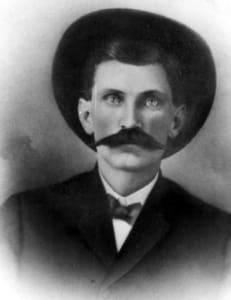Step back in time to the Great Depression and Prohibition era in Clay County, Florida. Discover the gritty reality of life in a “dry” county where moonshine flowed freely and corruption ran deep. From the Sheriff’s Office records to the infamous murder of Sheriff Cherry, this page offers a glimpse into the illicit underworld of bootlegging and law enforcement in the early 1900s.
Hard Times in the 1920s and 1930s
Clay County, Florida was hard hit by the Great Depression. The 1925 Census of Agriculture shows that there were 362 farms. All but fifty-two of these were under one hundred acres in size. Only ten of them were on improved roads. 28,431 pecan trees had been planted, principally around Long Branch, but were not bearing yet. The hopes of these small farm owners and the dreams of pecan fortunes were dashed in 1929.
In addition, David Paul Davis, born in Green Cove Springs and a land developer in Florida, hit hard times earlier than most, experiencing difficulties as early as 1926. A thesis “In Search of David Paul Davis” has been prepared. The paper is available at the Archives.
The Federal government tried to help with three major efforts: The Resettlement Administration, The Works Progress Administration (WPA), and the Civilian Conservation Corps (CCC).
The Resettlement Administration provided loans and helped farmers move to better land. Small farmers were given mortgages against personal property, farm equipment and even future crops to help them through tough times. They were encouraged to move to larger communities. The WPA employees documented substantial amounts of historical records which would have been lost otherwise over time — work that kept writers busy. And the CCC built Gold Head State Park — one of the first in Florida.This work relief program gave millions of young men employment on environmental projects during the Great Depression. Considered by many to be one of the most successful of President Roosevelt’s New Deal programs, the CCC planted more than three billion trees and constructed trails and shelters in more than 800 parks nationwide during its nine years of existence. The CCC helped to shape the modern national and state park systems we enjoy today.
Moonshine

There has never been a shortage of moonshine in Clay County, even during Prohibition (1919-1933). It was the one sure source of cash when you had nothing else to sell. Clay voters voted to become a “dry” county in 1918 and remained so even after Prohibition.
Sheriffs made varying degrees of effort at cleaning up the county. The “Whiskey” (available at the Archives) lists alcohol seizures at the beginning of the Great Depression 1928-1933: 58 stills, 4 trucks, 17 cars, 1 mule and wagon, 1 motorboat, 600 gallons of moonshine, and 175 barrels of mash. While most of the pints of whiskey had owner’s names next to them, almost all of the stills’ owners are listed as unknown. Even the exact areas where moonshine stills were found aren’t generally recorded, except in West Tocoi and Highland, which are, coincidentally, near the county lines.
The Clay County Sheriff’s Office records show that five-gallon jars were the most common size. A typical set up with the mash on the right, and the whiskey barrel on the left.
The Murder of Sheriff Cherry

Sheriff Cherry
The official story is that Sheriff Cherry went out to arrest a man and the man shot and killed him. The more detailed version of the story is, two weeks beforehand, Cherry had a fist-fight with a moonshiner who ran a juke joint in Middleburg. The man who was accused of killing Sheriff Cherry was that moonshiner’s stable hand.
Two years before he was murdered he had arrested five or six moonshiners. The year before, he had arrested four moonshiners. The month before he died he had arrested twenty-three moonshiners. On the day he died, he went to Yellow Water on the Duval County border. Cherry turned his back on the man he was going to arrest and was shot in the back with 00 buckshot. The pattern was clearly visible in his back and obviously from close range.
The investigation of Sheriff Cherry’s murder was conducted by Sheriff Dowling of Duval County, who later served five years in a federal penitentiary himself for moonshining, an arrest that occurred shortly after Cherry’s death. Sheriff Dowling was using the fast boat the Feds had given him to chase blockade runners off the coast to actually ship his own moonshine. The going rate for a sheriff to turn a blind eye was a dollar a barrel.

